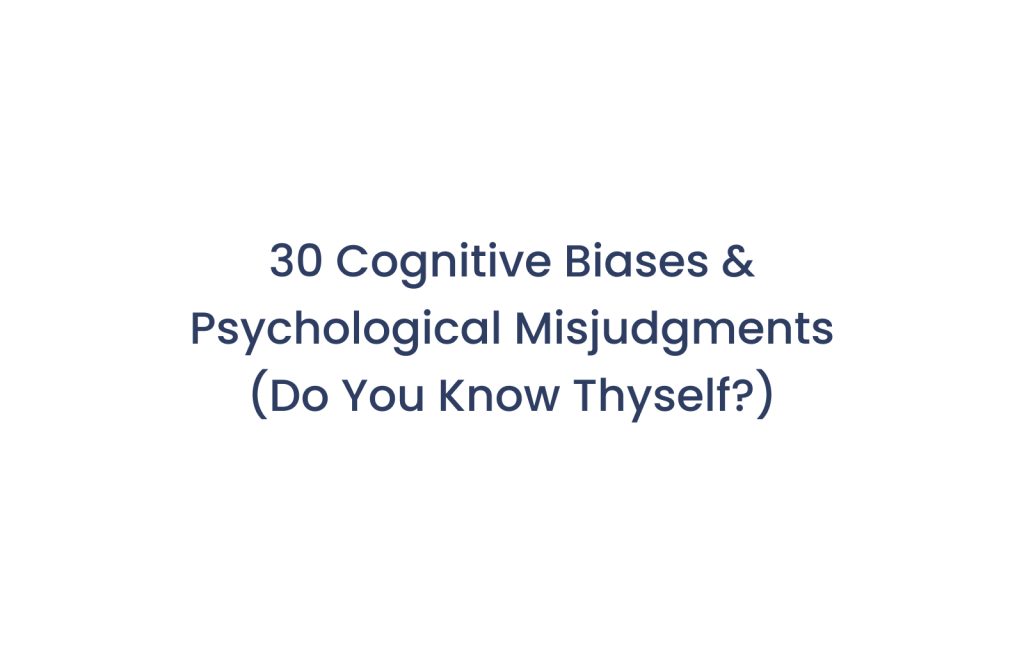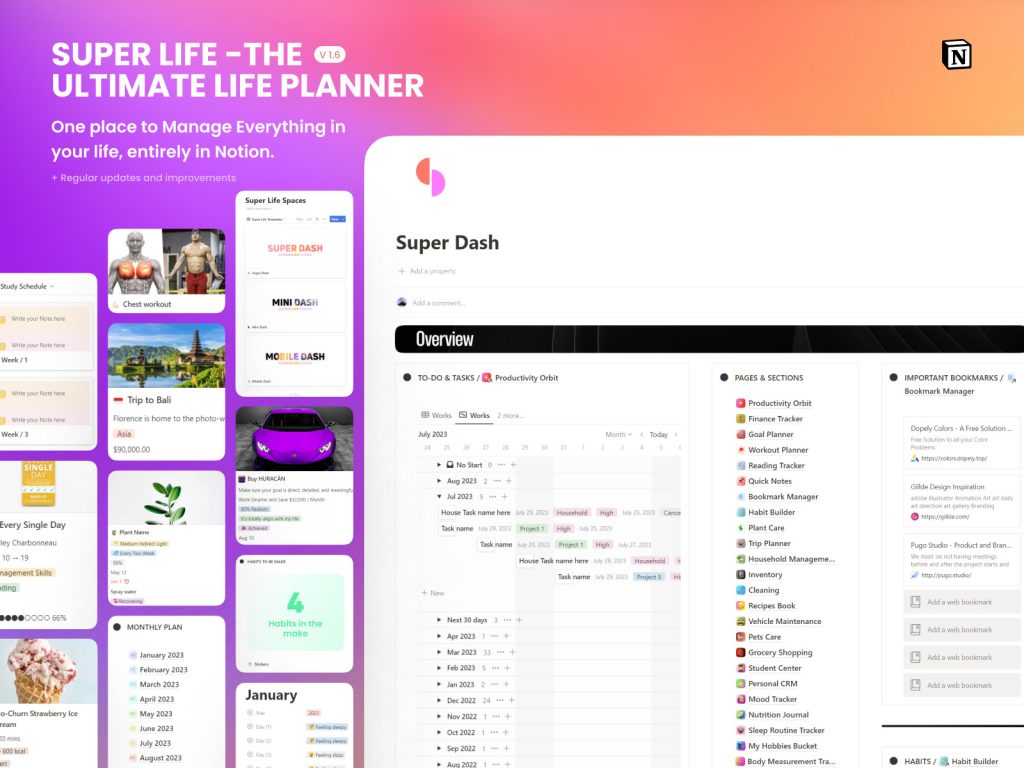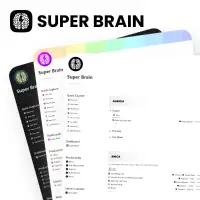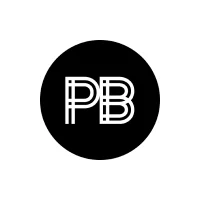30 Cognitive Biases & Psychological Misjudgments (Do You Know Thyself?)

Exploring the Depths of Cognitive Biases: Understanding Your Mind’s Inner Workings
Cognitive biases and psychological misjudgments are inherent ‘faults’ in our thinking process that can affect our decision-making abilities and perceptions. They have deeply embedded patterns of human thought and behavior that can lead us to perceive reality inaccurately and make irrational choices.

What are Cognitive Biases?
Cognitive biases are systematic errors in thinking that can occur when we process and interpret information. They often stem from our brain’s attempts to simplify information processing. Despite being mental shortcuts that often serve us well, they can lead to faulty conclusions.
Understanding Psychological Misjudgments
Psychological misjudgments are tendencies to draw erroneous conclusions or make incorrect decisions based on the information at hand. They often occur due to limitations in our cognitive abilities, the influence of emotions, or a failure to apply critical thinking skills.
The Importance of Self-Awareness
Understanding these biases and misjudgments is a crucial part of self-awareness. It can help us to become more objective, make better decisions, and navigate the world more effectively. In this article, we will explore 30 common cognitive biases and psychological misjudgments. By understanding them, you’ll be better equipped to recognize when they affect your judgment and make more informed, rational decisions.
To Know Thyself Is The Beginning Of Wisdom
Navigating 30 Cognitive Biases in Everyday Life
- Confirmation Bias
- Definition: The tendency to pay more attention to evidence that backs up your beliefs and disregard anything that doesn’t.
- Example: Only seeking out news sources that align with your political views.
- Hindsight Bias
- Definition: The belief that you predicted an outcome after it has already occurred, even when it was unforeseeable.
- Example: Saying, “I knew it all along!” after the result of a sports match.
- Anchoring Bias
- Definition: Basing decisions on the first piece of information encountered, even if it’s not accurate.
- Example: Negotiating a price based on the initial asking price, regardless of the item’s value.
- Self-Serving Bias
- Definition: Attributing successes to your abilities and failures to external factors.
- Example: Taking credit for a project’s success but blaming others for its failure.
- Availability Heuristic
- Definition: Judging the likelihood of an event based on how easily relevant examples come to mind.
- Example: Assuming flying is riskier than driving after hearing about a plane crash.
- Fundamental Attribution Error
- Definition: Attributing others’ behavior to their inherent traits while overlooking situational factors.
- Example: Assuming someone is always late because they are lazy, without considering traffic conditions.
- Dunning-Kruger Effect
- Definition: Overestimating one’s knowledge or ability in a specific area despite low competence.
- Example: Someone with minimal experience in finance thinking they can outperform professional investors.
- Belief Bias
- Definition: Accepting a conclusion if it aligns with your beliefs, regardless of flawed logic.
- Example: Supporting a political argument because it aligns with your party’s views, even if it lacks evidence.
- Negativity Bias
- Definition: Giving more weight to negative experiences over neutral or positive ones.
- Example: Focusing on a single criticism rather than several compliments received on a project.
- Optimism Bias
- Definition: Believing you are less likely to experience negative events than others.
- Example: Assuming you won’t be affected by a rare health condition even though it runs in your family.
- Overconfidence Effect
- Definition: Having more confidence in your judgments than their objective accuracy.
- Example: Believing you can complete a complex task quickly, underestimating the time required.
- Planning Fallacy
- Definition: Underestimating the time, costs, and risks of future actions and overestimating benefits.
- Example: Assuming a home renovation project will be completed much sooner and cheaper than it actually is.
- Halo Effect
- Definition: When a single positive trait influences the perception of an individual’s overall qualities.
- Example: Believing someone is highly competent in all areas because they excel in one skill.
- Horns Effect
- Definition: The opposite of the halo effect, where one negative trait influences the perception of other negative traits.
- Example: Assuming someone is dishonest because they made one mistake.
- Sunk Cost Fallacy
- Definition: Continuing a behavior or endeavor due to previously invested resources that can’t be recovered.
- Example: Staying in a failing relationship because of the time and effort already invested.
- Gambler’s Fallacy
- Definition: Believing that if an event happens more frequently in the short term, it’s less likely to happen in the future.
- Example: Thinking a coin is more likely to land on tails after several consecutive heads.
- Groupthink
- Definition: When a group reaches a consensus without critically evaluating alternative viewpoints.
- Example: A team making a decision without considering dissenting opinions to maintain harmony.
- False Consensus Effect
- Definition: Overestimating how much others agree with your opinions.
- Example: Assuming that everyone you know shares your political beliefs.
- Actor-Observer Bias
- Definition: Attributing our own actions to external factors and others’ actions to their inherent traits.
- Example: Blaming being late on traffic while assuming others are late due to laziness.
- Just-World Hypothesis
- Definition: Believing that the world is just, and people get what they deserve.
- Example: Assuming that successful people are morally good and unsuccessful people are morally flawed.
- Curse Of Knowledge
- Definition: When an informed person forgets that others don’t have the same knowledge.
- Example: Explaining complex concepts without realizing that others may not understand them.
- Illusory Superiority
- Definition: Overestimating one’s own abilities and qualities in comparison to others.
- Example: Believing you are smarter and more talented than the average person.
- Endowment Effect
- Definition: Overvaluing something simply because you own it.
- Example: Being unwilling to sell an item at its market value because you place a higher value on it.
- Spotlight Effect
- Definition: Overestimating how much others notice and pay attention to our appearance or behavior.
- Example: Feeling self-conscious about a minor flaw, thinking everyone is noticing it.
- Recency Bias
- Definition: Giving more weight to the latest information and overlooking older data.
- Example: Forming opinions based solely on recent events and disregarding historical context.
- Framing Effect
- Definition: Decisions influenced by how information is presented, depending on whether it’s framed positively or negatively.
- Example: Preferring a product described as “90% fat-free” over one labeled “10% fat.”
- Survivorship Bias
- Definition: Focusing on successful instances and ignoring unsuccessful ones that are less visible.
- Example: Believing that all successful entrepreneurs followed a specific path, overlooking those who failed.
- Base Rate Fallacy
- Definition: Ignoring general information and focusing on specific cases, leading to incorrect conclusions.
- Example: Assuming a rare medical condition based on a few symptoms without considering more common explanations.
- In-Group Bias
- Definition: Favoring our own group over others, leading to unfair treatment and discrimination.
- Example: Preferring to hire employees from the same alma mater over equally qualified candidates from other schools.
- Cognitive Dissonance
- Definition: Mental discomfort when beliefs contradict behavior, leading to justifying actions or changing beliefs.
- Example: Smoking despite knowing the health risks, then rationalizing it by saying “it’s just one cigarette.”
Understanding and recognizing these cognitive biases and psychological misjudgments can significantly enhance self-awareness and critical thinking. By being aware of our inherent biases, we can strive to make more rational and informed decisions, leading to personal growth and a deeper understanding of ourselves and others. Embracing this knowledge allows us to navigate life’s challenges with a more objective and open perspective, ultimately leading to wiser choices and better outcomes.
Real-Life Examples: How Cognitive Biases Shape Our Choices
- Confirmation Bias: A political enthusiast exclusively follows news channels and websites that align with their beliefs. They selectively interpret information to validate their views, dismissing opposing arguments as biased or inaccurate.
- Anchoring Bias: A shopper sees a “50% off” sign on a product, assuming it’s a great deal without checking the original price. However, the initial “anchor” might be artificially inflated to make the discount seem more significant.
- Availability Heuristic: A person is fearful of flying after hearing news about plane crashes. Despite statistically low chances of accidents, they opt for a long road trip instead, influenced by recent media coverage.
- Self-Serving Bias: An athlete attributes their victories to skill and hard work but blames losses on bad luck or external factors, protecting their self-esteem and self-image.
- Gambler’s Fallacy: A gambler at a casino believes that after a series of losses, they are due for a win, assuming the odds will eventually balance out. They continue to bet, disregarding the statistical independence of each event.
- Sunk Cost Fallacy: An entrepreneur pours more money into a failing business, convinced that their previous investments will eventually pay off, even when evidence suggests otherwise.
- Groupthink: In a corporate boardroom, team members withhold dissenting opinions to avoid conflict and maintain harmony. As a result, the group fails to critically evaluate alternative strategies, leading to suboptimal decisions.
- Recency Bias: A hiring manager solely relies on the candidate’s recent impressive achievements, overlooking their past job performance and overall experience.
- Illusory Superiority: A student believes they are better at multitasking than their peers, even though research shows that multitasking negatively affects productivity.
- Halo Effect: An attractive celebrity endorses a skincare product, leading consumers to believe the product is effective for all skin types, regardless of its actual efficacy.
Navigating Cognitive Biases in Personal and Professional Life
Cognitive biases play a significant role in shaping our relationships with others, influencing our perceptions, communication, and decision-making. Understanding the impact of these biases can shed light on various aspects of personal relationships, workplace dynamics, and team collaborations. By being aware of these biases, individuals can foster better communication and deeper understanding, fostering healthier and more productive relationships.
The Human Element: Understanding Cognitive Biases in Social Settings:
- Confirmation Bias in Personal Relationships: In personal relationships, confirmation bias can lead to misunderstandings and conflicts. When we favor information that reinforces our preconceived notions about someone, we may overlook their positive qualities or misinterpret their intentions. This can hinder open communication and create barriers between individuals.
- Self-Serving Bias in Workplace Dynamics: In the workplace, self-serving bias can affect teamwork and collaboration. When team members attribute their successes to their abilities but blame failures on external factors, it can lead to a lack of accountability and hinder personal growth. Recognizing this bias can promote a culture of constructive feedback and shared responsibility.
- Availability Heuristic in Team Collaborations: In team collaborations, the availability heuristic can influence decision-making. Team members may rely on easily accessible information or past experiences, overlooking more relevant data. Being aware of this bias encourages a thorough examination of facts and fosters well-informed decision-making.
- Halo Effect in Personal and Professional Settings: The halo effect can influence both personal and professional settings. When we perceive someone positively based on a single admirable trait, we may overlook their flaws or other valuable qualities. Recognizing the halo effect enables us to form more balanced opinions of others and appreciate their multifaceted nature.
- Groupthink in Decision-Making: Groupthink can have detrimental consequences in decision-making processes. In a cohesive group, members may suppress dissenting opinions to maintain harmony, leading to suboptimal choices. Encouraging open dialogue and considering diverse perspectives can mitigate the effects of groupthink and foster innovative solutions.
- Negativity Bias in Personal Relationships: Negativity bias can have a profound impact on personal relationships. We tend to give more weight to negative experiences and criticism, which can overshadow positive interactions and erode trust. By recognizing this bias, individuals can actively focus on positive aspects and cultivate healthier relationships.
- Fundamental Attribution Error in Workplace Communication: The fundamental attribution error can affect workplace communication. When misunderstandings arise, individuals may attribute the behavior of others solely to their personality traits, overlooking situational factors. Awareness of this bias fosters empathy and promotes effective communication and conflict resolution.
- Dunning-Kruger Effect in Team Collaborations: The Dunning-Kruger effect can impact team collaborations. Team members who overestimate their knowledge or abilities may resist feedback and hinder team progress. Encouraging a culture of continuous learning and constructive criticism can help mitigate this bias and promote professional growth.
Understanding cognitive biases in relationships empowers individuals to navigate interpersonal interactions with greater empathy and open-mindedness. By recognizing and challenging these biases, individuals can foster a more inclusive and understanding environment, leading to stronger personal relationships, improved workplace dynamics, and enhanced team collaborations.
Mitigation Strategies: Counteracting the Influence of Cognitive Biases
Cognitive biases can significantly impact our decision-making, leading to suboptimal outcomes in both personal and professional spheres. However, there are practical strategies we can employ to mitigate the effects of these biases and make more informed choices. By cultivating self-awareness and adopting specific techniques, we can counteract the influence of cognitive biases and improve the quality of our decisions.
1. Pause and Reflect:
When faced with important decisions, take a moment to pause and reflect. Acknowledge that cognitive biases can cloud judgment and influence perceptions. By stepping back and creating some mental distance, you allow yourself to view the situation more objectively.
2. Seek Diverse Perspectives:
Surround yourself with a diverse group of individuals with varying backgrounds and viewpoints. Actively seek out their perspectives when making decisions. This can help counteract biases like confirmation bias and groupthink, as diverse viewpoints challenge our preconceived notions and open our minds to alternative possibilities.
3. Embrace Critical Thinking:
Engage in critical thinking by questioning your assumptions and evaluating the evidence before reaching a conclusion. Challenge yourself to consider different angles and potential biases that might be influencing your thinking.
4. Apply the “Outside View”:
When considering a decision, adopt the “outside view” by examining similar past situations and their outcomes. This approach helps you avoid overconfidence and the planning fallacy by grounding your predictions in historical data.
5. Utilize Decision Frameworks:
Implement decision-making frameworks that encourage structured and systematic evaluations. Tools like the SWOT analysis, cost-benefit analysis, or the six thinking hats method can provide a more balanced and rational approach to decision-making.
6. Keep a Decision Journal:
Maintain a decision journal to track your thought processes and the outcomes of your choices. Regularly reviewing your past decisions can help identify patterns of cognitive biases and enhance your awareness of their influence on your judgment.
7. Encourage Devil’s Advocacy:
Embrace the role of devil’s advocate in decision-making discussions. Invite others to challenge your ideas and explore potential downsides. This approach can help mitigate biases like the optimism bias and improve overall decision quality.
8. Implement Decision Timelines:
Set specific decision timelines and adhere to them. Avoid rushing into important choices impulsively, as this can be influenced by the recency bias. Having a structured timeline allows you to gather more information and deliberate thoroughly.
9. Recognize Emotional Influences:
Be mindful of emotions that may cloud your judgment, such as fear, excitement, or anger. Emotional biases can distort decision-making. Take a step back to assess the situation with a calmer and more rational mindset.
10. Foster a Culture of Feedback:
Encourage open feedback and constructive criticism within your team or social circles. By welcoming diverse perspectives and feedback, you create an environment where cognitive biases are more likely to be challenged and corrected.
By applying these mitigation strategies, we can cultivate a more balanced and objective decision-making process. Over time, these practices become ingrained habits that help us navigate the complexities of life with greater clarity and effectiveness, reducing the impact of cognitive biases and fostering better overall outcomes.
Key Takeaways
Be mindful of your predisposition to accept evidence that aligns with your beliefs (confirmation bias). Understand that your predictions may not be as accurate as they seem after the fact (hindsight bias). Remember that the first piece of information isn’t always the most accurate (anchoring bias). Acknowledge that your successes and failures might not be entirely due to your actions (self-serving bias). Be aware of your tendency to favor immediate examples (availability heuristic).
Conclusion
Cognitive biases and psychological misjudgments are deeply ingrained into our thought processes, subtly influencing our perceptions and decision-making. Understanding these biases and how they operate can provide us with the tools to identify and mitigate their effects, leading to better decisions and a more profound understanding of ourselves and others. In a sense, it’s a journey toward knowing oneself, well worth embarking upon.
Are you tired of juggling multiple apps and platforms to stay organized?
Say hello to the game-changer that will revolutionize your life – introducing “Super Life,” the ultimate life planner designed exclusively for Notion users.
Take charge of your life and unlock your full potential with this all-in-one Notion template. Seamlessly manage tasks, notes, plans, health, finances, and more, all in a visually appealing and efficient manner.

With “Super Life,” you get a holistic approach to life organization, right in your favorite tool – Notion. From a comprehensive dashboard to a finance tracker and planner, monthly and daily planners, bookmarks, reading lists, workout plans, plant care, and trip planning – everything you need is at your fingertips.
Harness the power of Notion’s seamless, intuitive, and customizable interface to elevate your productivity and collaboration. Embrace a more organized and streamlined life today!
Don’t miss out on the opportunity to transform the way you approach work and leisure. Unlock the power of productivity and organization in one place with “Super Life” on Notion – the ultimate life planner.
Visit our Notion template now and unlock your Super Life! Be more productive at work with the ultimate life planner Notion template. Let “Super Life” revolutionize your productivity journey.

















